Umbro
Umbro is an English sportswear and football equipment supplier based in Cheadle, near Manchester. Umbro designs, sources, and markets football-related apparel, footwear, and equipment. Its products are sold in over 90 countries worldwide. Since 2012, the company has been a subsidiary of American company Iconix Brand Group,[1] after being bought by Nike in 2007.
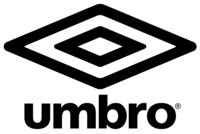 | |
| Subsidiary | |
| Industry | Sports equipment |
| Founded | 23 May 1924 in Wilmslow, England |
| Founder | Harold & Wallace Humphreys |
| Headquarters | , England |
Area served | Worldwide |
| Products | Footballs, Kits, Goalkeeper gloves, Boots, sportswear, Rugby kit |
Number of employees | 1,677 |
| Parent | Iconix Brand Group |
| Website | www |
History
Beginning and expansion
The company was founded in 1920 by Harold Humphreys, along with his brother Wallace in a small workshop in Wilmslow, Cheshire, inspired by the growing interest in football witnessed nationwide. The name was changed in 1924 to "Umbro" and is a quasi-portmanteau inspired by Humphreys Brothers Clothing.[2] Umbro's kit debut was in the 1934 FA Cup final, when both teams Manchester City and Portsmouth wore kits designed and manufactured by the company. Other teams supplied by Umbro during the 1930s and 1940s were Sheffield United, Preston North End, Manchester United, Tottenham Hotspur and Blackpool.
Umbro was the official sports manufacturer of the English FA Cup and official sponsor of The FA, being the exclusive supplier of balls to the body's leagues.
In 1952, the British team at the Summer Olympics wore Umbro kits, tailored for the needs of their individual sports. Umbro would supply kits for the British Olympics team for the next 20 years.
In 1957, Umbro entered the tennis market, producing sports clothing in collaboration with player Ted Tinling. This collaboration extended for three decades. Another sportsman who collaborated with Umbro was Manchester United manager Matt Busby, in 1959. That same year the company started to sell its junior boys' kits, a set of shirt, shorts and socks that would allow young players to wear the same look as their footballing idols.
Brazil became the first FIFA World Cup champion to wear kits by Umbro in 1958. Two years later, Manchester United Scottish player Denis Law signed an exclusive agreement with the brand, becoming the first footballer to be sponsored by Umbro. The England national team won its only title in 1966 wearing kits by Umbro (the deal had been signed in 1954). Of the 16 teams that competed, 15 wore kit manufactured by Umbro,[3] the only exception being the USSR. At the same time, 85% of British football teams wore kits by the company, including Celtic, the first British team to win a European Cup in 1967. Liverpool FC won the first four of their six European Cups while wearing Umbro kits, in 1977, 1978, 1981 and 1984.
In 1974, Umbro's founder, Harold Humphreys, died. His sons John and Stuart took over the running of the company. The England national team wore Umbro shirts by choice until 1974, when The Football Association, encouraged by the England manager Don Revie, sold the jersey manufacturing rights to Admiral Sportswear.
After more than a decade wearing Admiral kits, the England national team signed with Umbro again in 1984. In 1986, Umbro began to manufacture its own football boots. The company added footballers Alan Shearer and Michael Owen (who was only 14 years old) to its list of sponsored athletes. In 1994, Brazil won its fourth FIFA World Cup title in the United States and club teams AFC Ajax (in 1995), and Manchester United (in 1999) obtained the UEFA Champions League and the Intercontinental Cup, in Tokyo, all of them wearing Umbro kits.
In the United States, Umbro was the majority owner (94%) of United Soccer Leagues, the parent organization for North America's lower division men's soccer (tiers two through four in the American Soccer Pyramid), and the second tier women's league (W-League) and youth league (Super Y-League).[4] During the 2009 USL First Division season, the Carolina RailHawks, Charleston Battery, Vancouver Whitecaps, Rochester Rhinos, Austin Aztex, and Puerto Rico Islanders all wore Umbro kits. During the 2012 USLPro season, the Dayton Dutch Lions wore Umbro.
In October 2007, JJB Sports bought a 10.1% stake in Umbro in a move to protect its stake in the market for England football shirts.[5]
Nike agreement

On 23 October 2007, it was announced Umbro had agreed to be bought by Nike in a deal worth GB£285 million, the equivalent of 193p per share. The Umbro board recommended to its shareholders they vote in favour of the approach, as it offered a very competitive price for the business. Umbro's share price at the time of the offer was close to 130p.[7] The deal was approved by regulators in December 2007 and concluded in February 2008.[8] With the objective of revitalising the brand, Umbro launched the "Tailored by England" lines. As of 4 June 2009, Umbro signed a deal with Manchester City to supply kits for the team. Wearing Umbro kits, Manchester City won its first championship in 34 years.[9]
In 2010, Umbro became sponsor of reformed American team New York Cosmos to be its exclusive kit supplier.[10]
In May 2012, Nike reported that they would be selling Umbro (along with Cole Haan) in order to focus on their sports brands, including Nike, Converse, Hurley and Air Jordan.[11] In September 2012, The FA announced that future England kits would be manufactured by Nike.[12][13]
Iconix Brand Group
In October 2012, Nike announced that it had agreed with Iconix Brand Group to sell Umbro for US$225 million.[14][15] The acquisition was completed in December 2012.[16]

In February 2014, it was announced that Umbro would supply Everton from the start of the 2014–15 football season.[17] This was the first new club announcement since Iconix Brand Group bought Umbro, and was followed by the announcement of similar deals with Hull City and French clubs Lens and Nantes. On 9 June 2014, Derby County announced that their kits for the 2014–15 season would be made by Umbro.
Later in 2014, Umbro announced deals to supply a number of teams, including the Serbian national football team, the Malawi national football team, Vasco da Gama and Grêmio.
In February 2015, Dutch Eredivisie champions PSV announced a new kit deal with Umbro, replacing PSV's previous deal with Nike, which had been in existence since 1994. The deal coincided with PSV's return to the UEFA Champions League after a six-year absence.[18]
In late April 2015, West Ham United announced a new five-year agreement with Umbro as the club's official technical partner. This agreement included creating a commemorative kit for the Hammers' final year in the historic Boleyn Ground.[19]
In early December 2015, German club 1. FC Nürnberg announced a long-term kit deal with Umbro as the club's official kit supplier, replacing Adidas.[20]
In May 2016, it was announced that Umbro had become the technical sponsor of Blackburn Rovers[21] in a five-year deal. And would also return to making A.F.C. Bournemouth kit after two separate occasions in the 70's and 80's for the 2017–18 season.
In June 2017, seven-times German Champion FC Schalke 04 announced a five-year deal with Umbro replacing Adidas after 55 years.
Products
Umbro currently focuses on football equipment, such as kit uniforms (jerseys, shorts and socks), goalkeeper gloves, balls and boots, apart of manufacturing other apparel such as t-shirts and jackets.[22]
Umbro was "the first brand to think of the reduced and less expensive version of the jerseys, to allow the little ones to wear their idols' shirts."[23]
Until the mid-1980s, the company manufactured only sports clothing, in particular football jerseys, shorts and socks, but had no footwear range. Eventually, in 1985, Umbro decided to introduce its first football boot into the Brazilian market. This design, cheaper than the products of existing boot brands such as Adidas, proved popular and went into mass production internationally two years later.
Umbro also manufactured a popular style of shorts that reached its peak in the United States in the late 1980s and early 1990s. They were made of nylon, had a drawstring waistband, and often came in bright colours. With the growth of youth soccer leagues in the U.S. in the 1980s, many youths, teens and young adults began wearing them as everyday clothing. At the height of the "Umbro fashion," other brands of football shorts, such as Adidas, Diadora, Hummel, Lotto and Mitre, also became popular. Its major competitors in this market include Reebok, Nike, Adidas, Puma and Lotto.
Other releases by Umbro include the Stealth boot,[24] released in 2010 and worn by players such as Gaël Clichy and Phil Jagielka. The same year, the company released the GT, worn by then-Fulham striker Darren Bent. The company announced it as "its lightest ever boot." This was succeeded by the GT II model.[25] June 2011 saw the release of the Umbro Geometra Pro.[26] In 2013, Umbro introduced to a new wave of releases that included the Speciali IV and the Geometra II.[27]
Following the purchase of the brand by Iconix Brand Group in 2013, the first major product release from Umbro was the UX-1,[28] a technologically advanced football boot which was voted as one of the best new releases of the year.[29]
Sponsorships
Umbro is the official supplier and sponsor of numerous association football teams, players and associations, including:
Association Football
National teams
Asia
Europe
North America
Club teams
Africa
Asia
Europe

































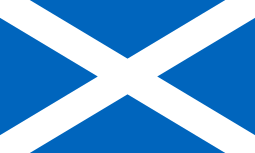







North America
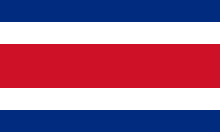
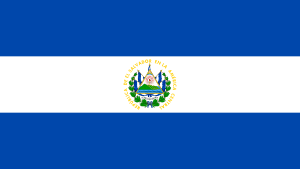

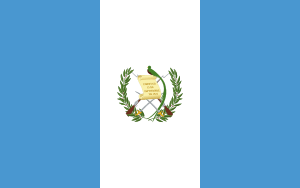
.svg.png)


South America


















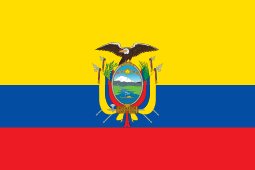






Athletes





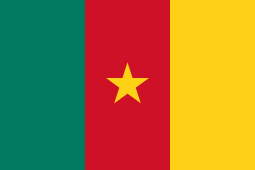














































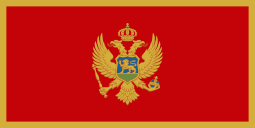









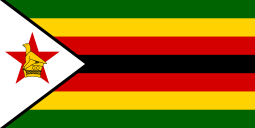
Curling
Volleyball
Artists
References
- Umbro at Iconix Brand website Archived 10 February 2013 at the Wayback Machine, retrieved 11 February 2013
- fsc. "The history of Umbro". footballshirtculture.com. Retrieved 3 April 2020.
- Umbro history website, retrieved 27 March 2013
- "Umbro increases share of USL ownership". USL Soccer. 16 March 2006.
- "JJB Sports acquires 10% in Umbro". BBC News. 19 October 2007.
- USL Umbro Dynamis Match Ball 2009, 16 January 2009
- "Nike to buy Umbro in £285m deal". BBC News. 23 October 2007. Retrieved 26 May 2010.
- "Nike to buy Umbro" at Portland Business Journal, 23 October 2007
- "Home". Global.
- "Umbro sign deal with New York Cosmos", SportsPro, 1 October 2010
- "Nike selles Cole Haan and Umbro", HighSnobiety website, 2012-05-31
- "England to wear Nike kits for first time after ending Umbro link". The Guardian. 3 September 2012.
- "England announce five-year kit deal with Nike", Goal.com, 3 September 2012
- "Iconix Brand Buys Nike’s Umbro Soccer Unit for $225 Million" at Bloomberg.com, 24 October 2012
- "NIKE, INC. Announces Sale of Umbro to Iconix Brand Group". Retrieved 20 January 2013.
- "Iconix Brand Group Completes Acquisition of Umbro from Nike for $225 Million", Fashion Invest website Archived 29 January 2013 at the Wayback Machine, 4 December 2012
- "Boss Unveils New Umbro Partnership", Everton FC, 4 February 2014
- PSV Eindhoven Announce Five-Year Umbro Kit Deal, 17 February 2015
- "West Ham re-united with Umbro", West Ham United FC, 30 April 2015
- Umbro and 1. FC Nürnberg Sign Long-Term Kit Deal, 3 December 2015
- "Rovers return to Umbro". Blackburn Rovers official website. Retrieved 2 June 2016.
- Umbro products on Umbro official website, retrieved 12 February 2017
- "Legendary brands: Umbro's history". nss magazine. Retrieved 3 April 2020.
- "Umbro Stealth Booth". SoccerCleats101.com. Retrieved 12 April 2010.
- "Umbro GT II at FootballBible.com".
- "Umbro Geometra". Footy-Boots.com. Retrieved 17 June 2011.
- "Umbro Geometra II". SoccerCleats101.com. Retrieved 4 April 2013.
- "Umbro UX-1 II". Soccerbible.com. Retrieved 7 January 2015.
- "Umbro UX-1 II". Soccerpro.com. Retrieved 7 January 2015.
- "Umbro Announces Botswana Kit Deal".
- "Umbro Announces Ethiopia Kit Deal".
- "Brentford Announce Umbro Kit Deal".
- "RFU". www.englandrugby.com. Retrieved 5 May 2020.
- "Williams Racing Confirms Umbro UK as Official Team Kit Supplier". www.williamsf1.com. Retrieved 7 August 2020.
- "Umbro Korea" (in Korean). facebook. 20 April 2016. Retrieved 15 May 2016.
